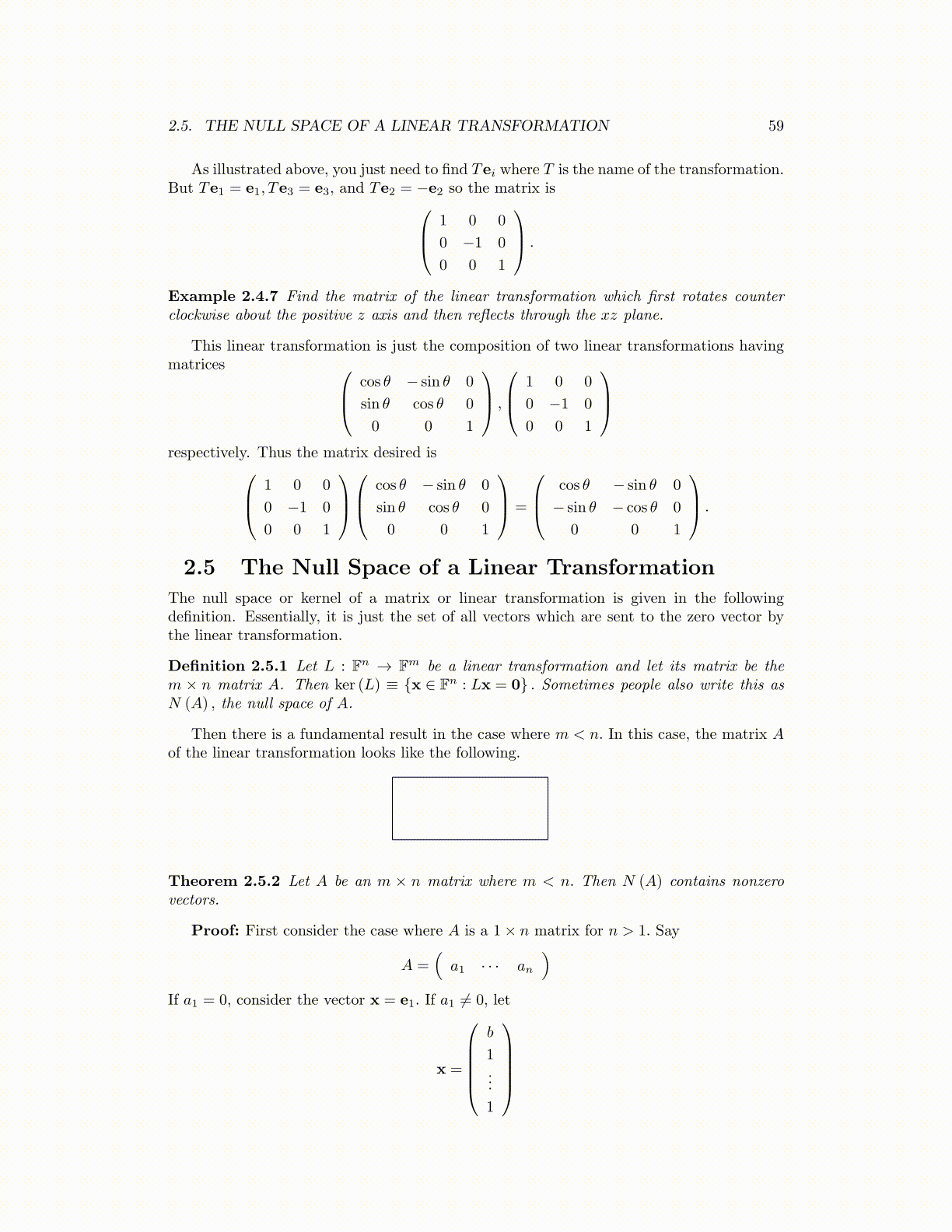
2.5. THE NULL SPACE OF A LINEAR TRANSFORMATION 59
As illustrated above, you just need to find Tei where T is the name of the transformation.But Te1 = e1, Te3 = e3, and Te2 = −e2 so the matrix is 1 0 0
0 −1 0
0 0 1
.
Example 2.4.7 Find the matrix of the linear transformation which first rotates counterclockwise about the positive z axis and then reflects through the xz plane.
This linear transformation is just the composition of two linear transformations havingmatrices cos θ − sin θ 0
sin θ cos θ 0
0 0 1
,
1 0 0
0 −1 0
0 0 1
respectively. Thus the matrix desired is 1 0 0
0 −1 0
0 0 1
cos θ − sin θ 0
sin θ cos θ 0
0 0 1
=
cos θ − sin θ 0
− sin θ − cos θ 0
0 0 1
.
2.5 The Null Space of a Linear Transformation
The null space or kernel of a matrix or linear transformation is given in the followingdefinition. Essentially, it is just the set of all vectors which are sent to the zero vector bythe linear transformation.
Definition 2.5.1 Let L : Fn → Fm be a linear transformation and let its matrix be them × n matrix A. Then ker (L) ≡ {x ∈ Fn : Lx = 0} . Sometimes people also write this asN (A) , the null space of A.
Then there is a fundamental result in the case where m < n. In this case, the matrix Aof the linear transformation looks like the following.
Theorem 2.5.2 Let A be an m × n matrix where m < n. Then N (A) contains nonzerovectors.
Proof: First consider the case where A is a 1× n matrix for n > 1. Say
A =(a1 · · · an
)If a1 = 0, consider the vector x = e1. If a1 ̸= 0, let
x =
b
1...
1